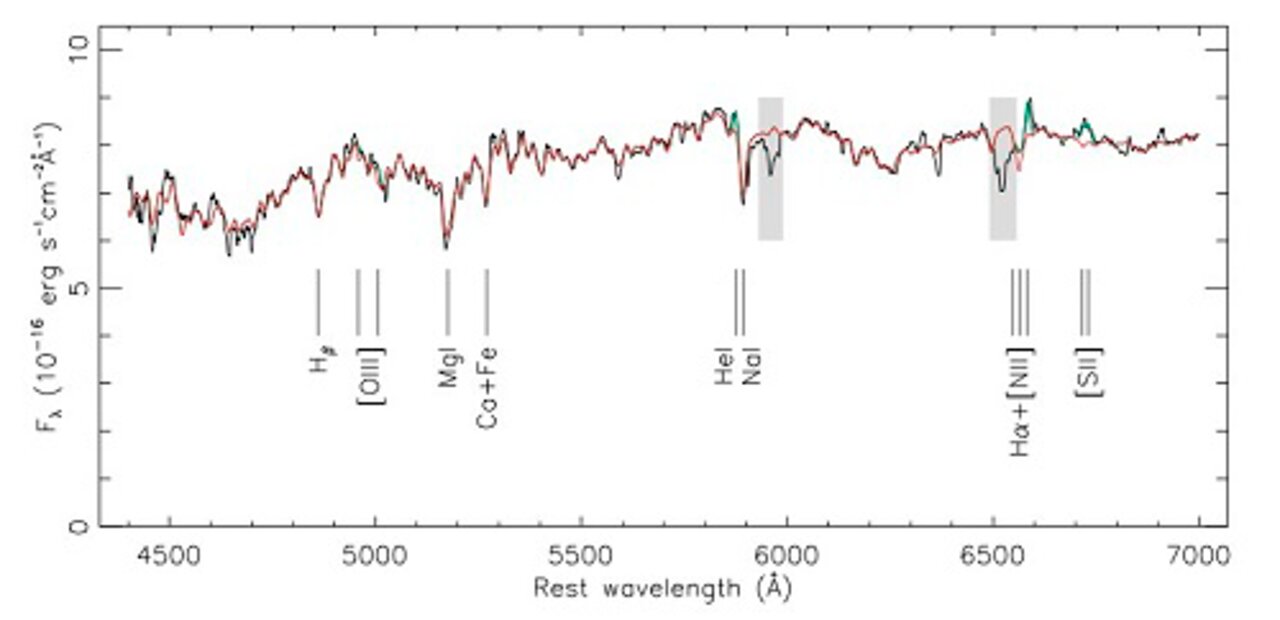Elusive Intermediate Mass Black Hole Revealed by Cosmic Belch
July 9, 2018

The frustrating search for intermediate mass black holes is advancing thanks to Gemini observations of a “belch” which escaped when a black hole devoured a star. The black hole powering the blast weighed in at a few tens of thousand solar masses and is quite possibly a missing link between supermassive and stellar mass black holes.
After 10 years of searching, an international team of astronomers used Gemini South, and space-based telescopes, to probe a luminous X-ray outburst unlike any seen before. The outburst was unusual because it appears to be the result of a “tidal disruption event” (TDE), in which a massive black hole slurps up an entire star, but this particular event did not occur within the center of a galaxy, where the most massive black holes reside.
In their investigation, the researchers measured the mass of the black hole that powered the outburst and found it was a likely Intermediate Mass Black Hole (IMBH) candidate. IMBHs are black holes with masses between that of supermassive black holes (millions of solar masses) and stellar mass black holes (a few to tens of solar masses). Astronomers continue to argue if IMBHs exist and therefore this finding will undoubtedly undergo intense scrutiny.
The paper, “A luminous X-ray outburst from an intermediate-mass black hole in an off-centre star cluster” is accepted in Nature Astronomy and a preprint is available here.
“This is a dramatic demonstration that detecting IMBHs through X-ray flares produced by tidal disruption events in star clusters is extremely effective in looking for IMBHs,” points out Rodrigo Carrasco, an astronomer at Gemini South and a co-author of the paper.
Dacheng Lin (University of New Hampshire) led the research and adds that previous strong TDE candidates were found in the centers of galaxies. “However, here we discovered a luminous X-ray outburst from a massive star cluster about 40,000 light years from the center of a large lenticular galaxy where it can be studied in relative isolation.” The host galaxy is about 780 million light years away and goes by the designation 6dFGS gJ215022.2-055059.
These circumstances allowed the team to study the X-ray flare emission as the black hole devoured a star far from the center of a galaxy and away from dense stellar regions where these events are generally found. “We had a nice clean laboratory in which to study this event,” said Carrasco. “That’s what allowed us to measure this black hole so confidently and conclude that this is very likely an IMBH revealing its secrets.”
The team used the Gemini Multi-Object Spectrograph on the Gemini South telescope in Chile with data obtained in late 2016, to determine the distance of the host galaxy and the off-centered star cluster.
Paper Abstract
A unique signature for the presence of massive black holes in very dense stellar regions is occasional giant-amplitude outbursts of multiwavelength radiation from tidal disruption and subsequent accretion of stars that make a close approach to the black holes . Previous strong tidal disruption event (TDE) candidates were all associated with the centers of largely isolated galaxies. Here we report the discovery of a luminous X-ray outburst from a massive star cluster at a projected distance of 12.5 kpc from the center of a large lenticular galaxy. The luminosity peaked at ∼1043 erg s−1 and decayed systematically over 10 years, approximately following a trend that supports the identification of the event as a TDE. The X-ray spectra were all very soft, with emission confined to be ≲3.0 keV, and could be described with a standard thermal disk. The disk cooled significantly as the luminosity decreased, a key thermal-state signature often observed in accreting stellar-mass black holes. This thermal-state signature, coupled with very high luminosities, ultrasoft X-ray spectra and the characteristic power-law evolution of the light curve, provides strong evidence that the source contains an intermediate-mass black hole (IMBH) with a mass of a few ten thousand solar mass. This event demonstrates that one of the most effective means to detect IMBHs is through X-ray flares from TDEs in star clusters.
